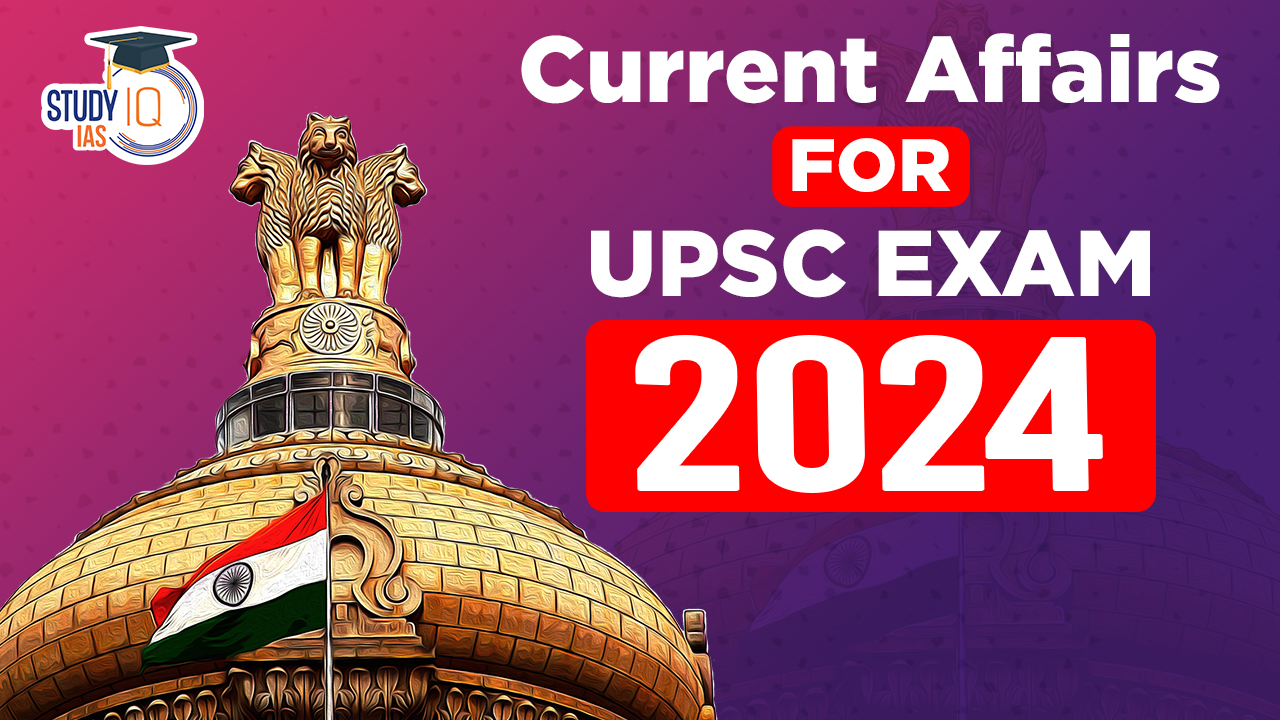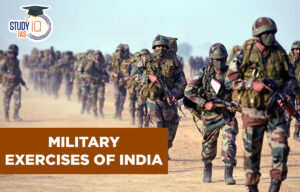Table of Contents
Balancing Competition And Sustainability For India
Context: To achieve its net-zero emissions pledge, India requires contributions from every economic sector towards adopting greener production methods.
Background
- Markets have traditionally been driven by supply and demand, the increasing impact of climate change is disrupting this balance.
- This disruption, coupled with the growing emphasis on sustainability, has presented a complex challenge for competition authorities worldwide.
India’s Approach to Sustainability
- The Securities and Exchange Board of India (SEBI) introduced a revised framework for the Business Responsibility and Sustainability Report in 2023.
- This framework requires companies to report their value chain’s environmental impact, aiming to enhance transparency, combat greenwashing, and ensure sustainability benefits throughout the value chain.
- Competition Commission of India (CCI):
- Sustainability Considerations: The CCI may explore including sustainability policies in its evaluations. India has pledged to achieve net-zero emissions by 2070, but ranked fifth in global warming contributions in 2023.
- Pandemic Response: During the COVID-19 pandemic, the CCI issued an advisory acknowledging supply chain disruptions and the need for information sharing to ensure fair distribution of products and services.
- Advisory and Exemptions: The CCI can issue advisories for enterprises to be exempted from sanctions if collaborations aim for sustainable goals or greener innovations.
- Section 49(3) of the Competition Act, 2002: Allows the CCI to promote competition advocacy and awareness, and participate in formulating economic policies that touch upon competition and sustainability.
- Guidance Notes: The CCI can release guidance notes on sustainability agreements and exemption methods under the Competition Act, 2002.
| TRAI’s 2011 Recommendations |
| The Telecom Regulatory Authority of India (TRAI) recommended integrating sustainability practices into the National Telecom Policy to promote an environmentally friendly telecom sector. |
International Examples: Approaches to Sustainability
- Japan’s Anti Monopoly Act: Japan introduced guidelines under the Anti Monopoly Act to support private businesses in horizontal collaborations for environmental sustainability.
- These guidelines suggest that such activities generally do not restrict competition and have pro-competitive effects benefiting consumers.
- European Commission’s Guidelines: The European Commission recently published draft guidelines on horizontal agreements with a specific section on sustainability agreements.
- The guidelines aim to address climate change, reduce pollution, limit resource use, and promote resilient infrastructure and innovation.
- These agreements will only raise concerns if they restrict competition by object or have significant negative effects on competition as per Article 101(1).
- UK’s Competition and Markets Authority: Launched a market study into the electric vehicle charging sector to foster competition alongside innovation, offering more choices, lower prices, greater investment, and quality improvements.
- A similar study on green initiatives could benefit the Indian market.
Conclusion
Integration of Sustainability in Competition Policy:
- Adopting New Technologies: To combat climate change, adapting and adopting newer technologies that reduce resource consumption and increase innovation through sustainability policies is crucial.
- Contribution Across Sectors: Every economic sector in India must contribute to achieving net-zero emissions.
- Guidelines and Policies: The CCI can enforce competition policies that improve innovation while considering environmental concerns.
- Integrating sustainability economics into competition policy can address market failures and collective action problems.
- Issuing guidelines can ensure the benefits of sustainability outweigh potential negative effects on competition.
- Cooperation Among Competitors: Including sustainability considerations in cooperation assessments can benefit sustainability in markets.
Climate trauma
Context:
- Multiple landslides after heavy rains flattened three villages in Wayanad district, Kerala.
- As of two days later, the death toll rose past 200.
- Residents displayed signs of shock and distress, with significant destruction of villages.
About Climate Trauma
- Climate trauma refers to the psychological distress and mental health conditions that arise from the direct and indirect impacts of climate-induced disasters, such as hurricanes, floods, wildfires, and extreme weather events.
- Reasons for Climate Trauma:
- Progressive Worsening of Disasters: Unlike sudden natural disasters, climate-induced events often worsen over time, leading to prolonged stress and uncertainty.
- Disruption of Daily Lives: These disasters significantly alter people’s daily routines, living conditions, and overall sense of security.
- Chemical Response to Stress: Continuous secretion of stress-related chemicals (dopamine, adrenaline, noradrenaline) can lead to maladaptive responses, reducing the ability to cope with stress.
Types of Trauma Created by Climate-Induced Disasters
- Post-Traumatic Stress Disorder (PTSD)
- Symptoms: Intrusive memories, flashbacks, distressing dreams, severe anxiety, and uncontrollable thoughts about the disaster.
- Example: Individuals affected by the Chamoli Floods (2021) reported nightmares and flashbacks, which are common symptoms of PTSD.
- Anxiety Disorders
- Symptoms: Excessive worry, restlessness, fatigue, difficulty concentrating, irritability, and physical symptoms like increased heart rate.
- Example: Studies from California Wildfires (2018) indicated heightened levels of general anxiety disorder among survivors.
- Major Depressive Disorder (MDD)
- Symptoms: Persistent sadness, loss of interest in activities, changes in appetite and sleep patterns, feelings of worthlessness or guilt, difficulty thinking or concentrating, and thoughts of death or suicide.
- Example: Individuals exposed to multiple disasters, like the wildfires in California, showed increased symptoms of depression.
- Adjustment Disorders
- Symptoms: Emotional or behavioural symptoms in response to a stressful event, such as feeling overwhelmed, difficulty functioning in daily life, and exhibiting extreme emotions.
- Example: People displaced in Indonesia floods (2016),1% of displaced individuals reported economic instability.
- Chronic Stress
- Symptoms: Long-term stress responses including headaches, insomnia, muscle tension, and a weakened immune system.
- Example: Continuous exposure to stressors, such as ongoing droughts or rising sea levels, can lead to chronic stress in affected populations.
Suggestive Measures
- Building Resilience: Develop detailed plans to manage disasters, including next steps, resources, and support systems.
- Encourage a logical, cognitive response to disasters rather than an emotional one.
- Psychological First Aid (PFA): Implement PFA training for at-risk individuals, focusing on promoting safety, stabilising survivors, and connecting them to resources.
- Meeting basic needs, listening, accepting feelings, assisting in moving on, and referring for treatment.
- Health Vigilance: Monitor mental and physical health indicators in disaster-affected populations.
- Address the increased risk of metabolic, communicable diseases, and mental health conditions following disasters.
- Encouraging Community Cohesion: Develop programs to support displaced individuals, ensuring stable housing and economic stability.
- Strengthen community support systems to help individuals cope with the aftermath of disasters.
Landslides as Disasters
Context: The Kerala government recently requested the Union government to include landslides as a national disaster.
More in News
- Landslides are one of the notified disasters under the NDM act 2005.
Notified Disasters and the DM Act
- The National Disaster Management (DM) Act was enacted following the 1999 Odisha super-cyclone and the 2004 tsunami.
- Definition: The DM Act defines a disaster as a “catastrophe, mishap, calamity or grave occurrence” arising from “natural or man-made causes” that results in significant loss of life, destruction of property, or environmental damage, and is beyond the coping capacity of the community.
- Current List of Notified Disasters: There are 12 categories of notified disasters: cyclones, drought, earthquakes, fires, floods, tsunamis, hailstorms, landslides, avalanches, cloudbursts, pest attacks, and frost and cold waves.
Legal Framework
- When such an event occurs, the DM Act provisions can be invoked.
- States can draw funds from the National Disaster Response Fund (NDRF) at the national level and the State Disaster Response Fund (SDRF) at the state level.
- States first utilise the SDRF and, if insufficient, seek funds from the NDRF.
- In FY 2023-24, only two states drew money from the NDRF.
Funding Sources
- NDRF: Entirely funded by the central government.
- SDRF: States contribute 25% (10% for special category states); the rest is funded by the central government.
- Funds can only be used for response and management of notified disasters.
| Related Information |
| India ranks seventh globally among regions most severely affected by extreme weather events. |
| Recently in News- Heatwaves as Disaster |
Finance Commission’s Stance: States have requested the inclusion of heatwaves before the last three Finance Commissions.
|
As In Kerala, Local Climate Processes Can Worsen Climate Extremes
Context: Disaster events are repeated due to a lack of understanding of local amplifiers.
What are the Reasons Contributed to Repeated Disasters?
- Imperfect Predictions: Improving model accuracy requires understanding local drivers that exacerbate climate effects.
- Global models miss local, small-scale warming or cooling processes, leading to inaccurate predictions of rainfall in extreme events.
- Broad Warnings: Broad warnings are often too vague for specific actions.
- Example: Declaring the entire Western Ghats vulnerable to landslides helps in general protection but cannot prevent all climate-induced extreme events.
- Lack of Specific Actions: Translating broad warnings into actionable measures is difficult.
- Example: Post-disaster analyses like those following the Wayanad landslides do not translate broad risk warnings into specific actions.
- Local Data Insufficiency: Collecting and integrating more local data into forecast models is necessary.
- Example: Coastal warming influences rainfall but is often missed by global models due to lack of detailed local data.
- Challenge:
- Failure to Learn from Past Disasters: Applying lessons from past disasters to understand and mitigate local amplifiers is crucial.
- Example: Changes in land use patterns, such as deforestation, can amplify extreme events, but lessons from past events are not always applied.
Recommendations
- Enhance Prediction Models: Use techniques like downscaling and AI/ML to improve the accuracy and speed of local weather predictions.
- Develop Location-Specific Measures: Implement legal protections for biodiversity and regulate land use based on specific regional risks.
- Collaborative Government Efforts: National and local governments should share monitoring, reporting, and verification responsibilities.
- Allocate Adequate Budgetary Provisions: Incorporate climate risk considerations into budget planning and ensure sufficient funding for mitigation efforts.
- Improve Data Networks: Develop a comprehensive data network to support the mapping of local extreme event amplifiers.
- Utilise Lead-Time Predictions: Use predictions with a few weeks’ lead time to mobilise disaster management personnel to high-risk areas.
What Do Scientists Make Of The Budget?
Context:
- This year’s budget allotted for the Department of Scientific and Industrial Research is ₹6,323.41 crore, a 10% increase from the previous year.
- Additionally ₹1 lakh crore corpus for the ANRF to encourage private sector-driven research and innovation.
Priority Areas
- Innovation, Research, and Development: Significant focus is placed on fostering basic research and prototype development across various scientific fields.
- Critical Minerals: Introduction of the “Critical Minerals Mission” and exemption of customs duties on 25 critical minerals to encourage research and utilisation in this sector.
- Energy Efficiency and Clean Energy: Promotion of energy-efficient technologies and clean energy initiatives, including miniature and modular nuclear energy technologies.
- Productivity and Resilience in Agriculture: Further emphasis on enhancing the productivity and resilience of the agricultural sector through biotechnological innovations.
- Commercialization of Technologies: Initiatives to facilitate the uptake of indigenous technologies through “plug and play” industrial parks and the creation of industrial parks under the National Industrial Corridor Development Programme.
- Private Sector Research: The abolition of the angel tax to encourage more private investment in research, especially in high-risk sectors like biotechnology.
Concerns Highlighted by Scientists
- Adequacy of Funding: There are doubts about the adequacy of the budget allocations, particularly in light of inflation and historical underspending. Subhash Lakhotia pointed out that the actual expenditure in the previous fiscal year was much less than what was initially allocated.
- Operational Challenges with ANRF: Questions remain about the operationalization of the Anusandhan National Research Foundation (ANRF) and its emphasis on prototype development, which may skew the focus away from fundamental research.
- Equitable Funding Distribution:P. Rajendran highlighted concerns regarding the distribution of funds, noting that state-run educational institutions receive significantly less compared to centrally administered ones like the IITs.
- Impact of Budget on Basic Research: There are fears that the focus on prototype development could undermine the support for basic scientific research, which is crucial for long-term technological advancements.
- Effectiveness of New Policies: While new initiatives such as venture capital funds for space technology are introduced, the actual funding amounts (e.g., ₹1,000 crore for space tech) might be insufficient to meet the high capital demands of such sectors.
Schools Can’t Force Younger Students To Use Textbooks Other Than Those Prescribed By Ncert, Scert: Delhi Education Dept
Context: The Delhi government’s education department has directed the heads of all recognised private schools.
More in News
- The directive is that they cannot force children of elementary classes to use textbooks other than those prescribed by NCERT and SCERT
- This move is aimed at ensuring compliance with Section 29 of the Right to Education Act, 2009,
- This outlines the curriculum and evaluation procedures for elementary education as determined by a specified academic authority.
- The Directorate of Education (DoE) issued a circular highlighting that no child should face discrimination, harassment, or neglect based on the type of textbooks they carry.
- It stressed that any mental or physical suffering caused could trigger the provisions of the Juvenile Justice Act, 2015.
About Right To Education (RTE)
- Right to Education Act (RTE):
- Enacted in 2009.
- Provides free and compulsory education to children.
- Enforced as a fundamental right under Article 21-A.
- Purpose: Ensures every child’s right to quality elementary education.
- Constitutional Background:
- Originally part of Part IV of the Indian Constitution, in Article 45 and Article 39 (f) of DPSP, which provided for state-funded, equitable, and accessible education.
- First official document on the Right to Education: Ramamurti Committee Report (1990).
- In 1993, Supreme Court judgement in Unnikrishnan JP vs State of Andhra Pradesh & Others declared Education as a Fundamental Right under Article 21.
- Tapas Majumdar Committee (1999) proposed the insertion of Article 21A.
- 86th Constitutional Amendment (2002) made Right to Education a fundamental right for children aged 6-14 years.
- 86th Amendment led to the Right to Education Bill 2008 and the eventual RTE Act 2009.
- Features:
- Provides primary education to all children aged 6 to 14 years.
- Enforces Education as a Fundamental Right (Article 21).
- Mandates 25% reservation for disadvantaged sections (SCs, STs, Socially Backward Classes, Differently abled).
- Provisions for non-admitted children to be admitted to age-appropriate classes.
- Financial and other responsibilities shared between Central and State Governments.
- Sets norms and standards for:
- Pupil Teacher Ratios (PTRs)
- Buildings and infrastructure
- School-working days
- Teacher-working hours.
- Initially included a “No Detention Policy” (removed in 2019 under The Right of Children to Free and Compulsory Education (Amendment) Act).
- Prohibits deployment of teachers for non-educational work, except for census, elections, and disaster relief.
- Requires teachers to have requisite entry and academic qualifications.
- Prohibits:
- Physical punishment and mental harassment
- Screening procedures for admission of children
- Capitation fee
- Private tuition by teachers
- Running of schools without recognition
- Aims to create a child-friendly and child-centred learning environment free from fear, trauma, and anxiety.
Sections 1(4) and 1(5) of the 2009 Act
- Section 1(5): “Nothing in this Act shall apply to madrasas, Vedic pathshalas, and educational institutions primarily imparting religious instruction.”
- Section 1(4): “Subject to Articles 29 and 30 of the Constitution, the provisions of this Act confer rights on children to free and compulsory education.”


 List of Military Exercises of India 2024...
List of Military Exercises of India 2024...
 India to Host First Global Conference on...
India to Host First Global Conference on...
 How Terror Networks Abuse Digital Tools
How Terror Networks Abuse Digital Tools





















